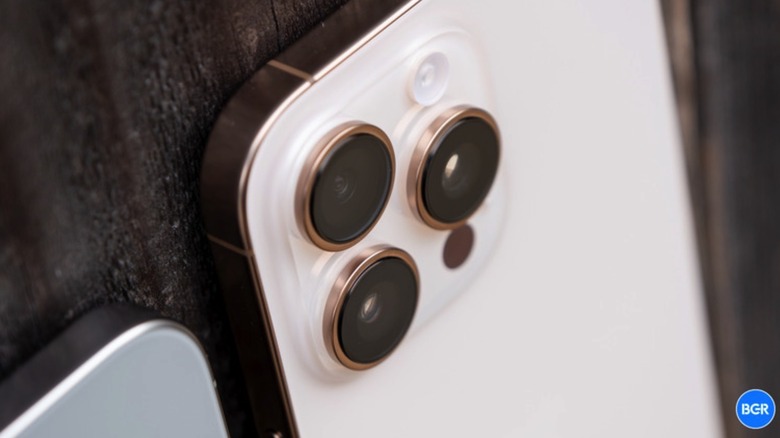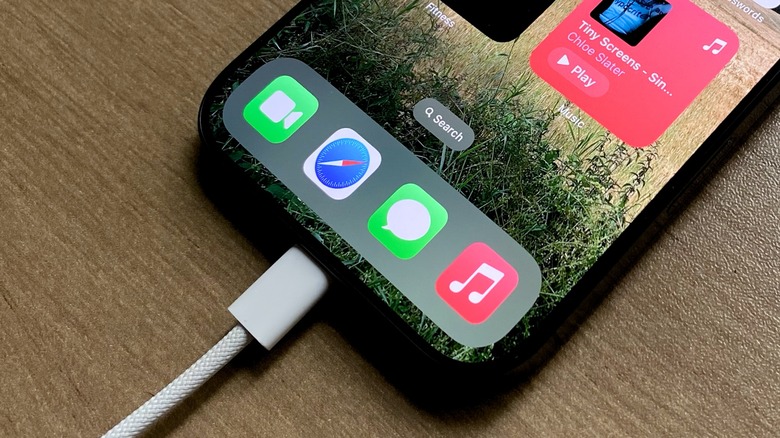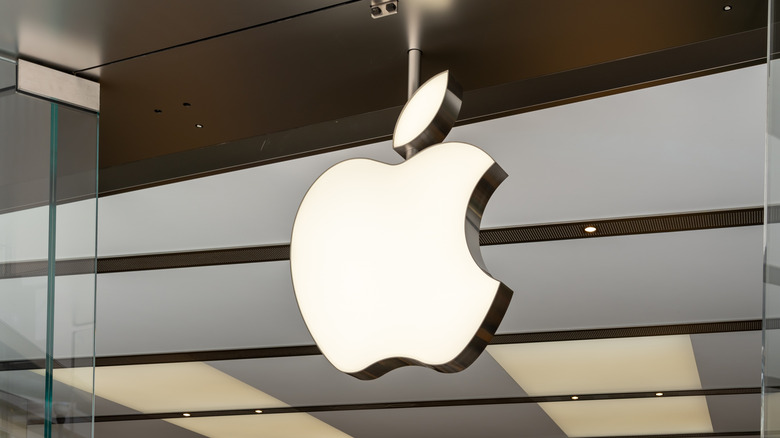Leak Reveals Apple's Plan To Prevent Tariffs From Raising iPhone 17 Prices
The iPhone 17 release date is about two months away, with Apple expected to deliver one of the most exciting iPhone lineups in history. The iPhone 17, 17 Air, 17 Pro, and 17 Pro Max are the rumored members of this year's new iPhone lineup. The ultra-thin Air model is easily one of the most notable additions to the iPhone family. If the most recent rumors pan out, the iPhone 17 Air might share some of the iPhone 17 Pro's best hardware in a much thinner body. This has prompted speculation that the iPhone 17 Air might be more expensive than the Plus model it replaces, especially in a world where tariffs might be applied to the iPhone.
Apple's best-selling device isn't subject to President Trump's tariffs as of this writing. But Apple said during its earnings call for the March quarter that tariffs on other products will amount to around $900 million for the June quarter. Trump has since threatened Apple with 25% tariffs on the iPhone. Separately, rumors earlier this year said that Apple had considered price hikes for the iPhone, but the company feared the optics. Any price hike for the iPhone 17 series would be inevitably tied to tariffs.
Apple has kept iPhone prices unchanged for years. The only big change Apple has made concerned the Pro Max model. Starting with the iPhone 15 Pro Max, Apple stopped offering a 128GB version. Prices started at $1,299 as a result, which is the standard price for a 256GB option. If the iPhone 17 Air gets specs similar to the iPhone 17 Pro (such as the processor and RAM), a price hike might be warranted. But if that happens, the more expensive iPhones 17 Pros could also become more expensive. Tariffs will be easy to blame.
Apple's plan: Cut iPhone 17 costs
A report from Korean language media outlet The Bell outlines one way Apple plans to deal with iPhone tariffs. Apple has asked suppliers of key, expensive iPhone parts to cut their prices. Apple has been negotiating new component deals with Samsung Display, LG Display, and LG Innotek. The first two make the expensive OLED panels while the latter ships camera components to Apple. The OLED screens are particularly expensive, accounting for more than 10% of the cost of smartphones.
Apple asked Samsung and LG to reduce iPhone 17 OLED panel prices significantly compared to similar demands for previous models. The report notes that Apple asks for discounts every year. LG Display reportedly agreed to the cuts, with Samsung still in negotiations.
LG Display and LG Innotek revenues are highly dependent on Apple, the report notes. That's why LG has been less reluctant than Samsung to agree to the new prices. Apple is considering the approval of BOE OLED panels for the iPhone to put pressure on Samsung. The report notes that any price cut Samsung Display would agree to will impact the entire supply chain associated with OLED displays.
Will it work?
It's important to remember how tariffs work. They don't apply to the consumer price that Apple advertises. Instead, they concern the import value declared at customs, which is based on the bill of materials (BOM) for the iPhone. Unofficial estimates put the BOM at around $570 for an iPhone 16 Pro. A 25% tariff would apply to that $570 cost. Therefore, the lower the import value, the lower the tariff will be. Apple probably can't circumvent the tariff's impact completely by negotiating lower component costs to offset the extra duties. But lowering the tariff is still a win. Apple can then decide to eat some of that cost, or pass it on to the consumer. It's also important to note that tariffs should only impact the iPhone 17 models sold in the US. But Apple can go for lower price hikes and apply them worldwide to offset tariffs as well.
Also, Apple might only raise prices for certain iPhone models. For example, the base iPhone 17 might still start at $799, while a 128GB iPhone 17 Air could cost $999 instead of the expected $899. Then, Apple could start iPhone 17 Pros with 256GB of storage, which means the starting price would be higher than before. This isn't a price hike per se, but you the cheaper 128GB version wouldn't be available in this scenario.
Finally, Apple might employ a combination of strategies to keep the iPhone 17 prices unchanged compared to last year, or at least as close as it can. This is all speculation, after all. The best outcome for Apple and its customers is the iPhone 17 models having the same pricing structure as last year's lineup. That's still a possibility. Trump has yet to announce tariffs for the iPhone as of this writing.


